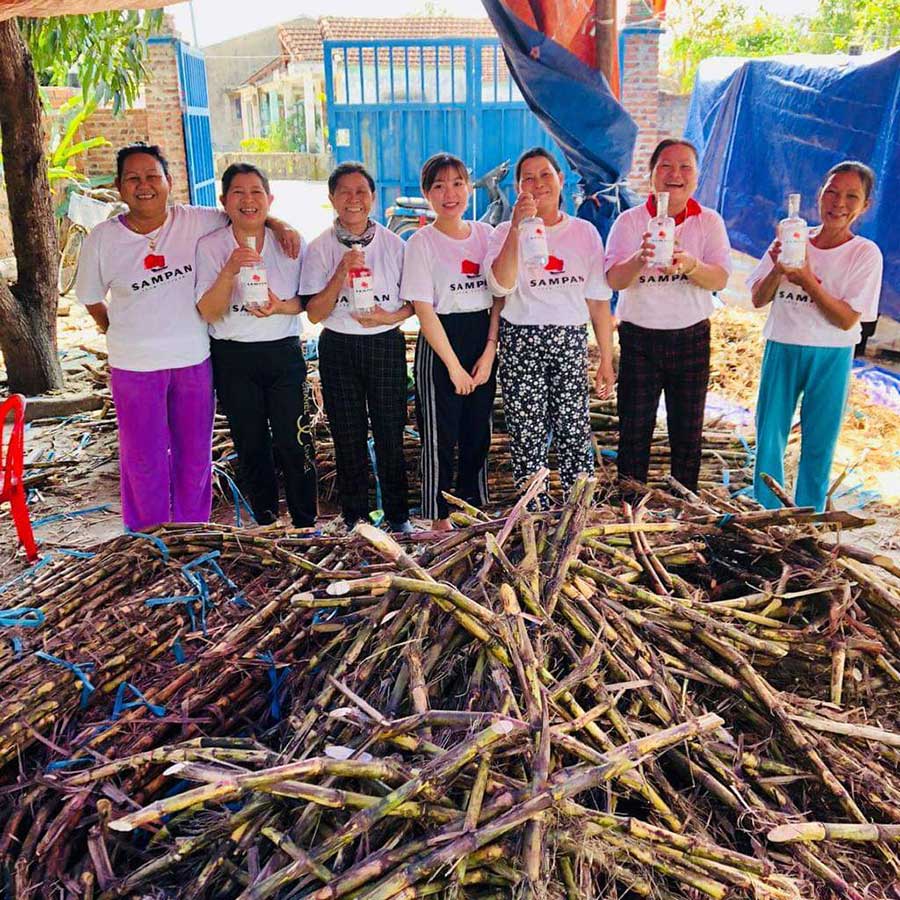Meet Antoine Poircuitte co-creator of Sampan Rums and The Indochine Distillery.

How did you come up with the idea of producing rum?
It was a long process. I kind of fell into spirits when I was a kid. Both my grandparents, on my father’s side (Franche-Comté, mainly cherry alcohol) and my mother’s (Lorraine, mainly Mirabelle plum), were farmers and distillers. I made my first distillation at the age of 10. And even my name comes from distilling pear alcohol!
What was your background?
I studied business and then worked in the wine and spirits trade. I arrived in Vietnam in 2008, where I stayed for 3 years. Then I went to Hong Kong for 3 years, and joined the Marie Brizard group in Shanghai. I put some money aside and went into business with my two associates, Yann and Julien.
Why did you choose South-East Asia and Vietnam to set up your business?
I wanted to get closer to the motherland of sugar cane, which comes from Papua New Guinea. And in Vietnam there are 300,000 hectares of cane fields with around sixty varieties and super quality. In 2017, I visited quite a few farms and analysed the soil and the sugar cane. The soil is very pure, these are old forests transformed into fields, with beautiful soil, no pesticides…
How did you get in touch with the local farmers?
It takes time to establish trusting relationships with people in Vietnam. But we managed to do it and we have projects together. For example, I proposed a cooperative project to them. I’d like to go further in terms of cultivation: stop ploughing, develop living soil. I have a very long-term vision. My growers are lending me 1 hectare where I can develop a 100% natural crop. Organic, with no added nutrients… in short, to develop a naturally farmed rum.
How is sugar cane grown?
Sugar cane grows during the rainy season and is harvested during the dry season. From February to August. We use a variety endemic to Vietnam and southern China. So Sam pan is a single-varietal, vintage rum. The distillery is 50 km from the cane fields. The cane is cut by hand the day before, in the late afternoon, and pressed within a maximum of 24 hours to guarantee freshness and avoid oxidation and bacteria in the cane juice. During the campaign, we process 8 tonnes of cane a day, 6 days a week.
What about the production process?
We only do one press, without any “imbibition”, which enables us to produce 4,000 litres of juice a day. The juice is fermented in temperature-controlled open vats. Fermentation takes a relatively long time, averaging 5 days, using yeasts developed from sugar cane molasses. Distillation takes place in a column with 11 extraction plates and 2 concentration plates. It is 100% copper and used to make Armagnac. Her name is Odette!
How much rum do you make?
In theory, you can make 1,000 litres of 70% alcohol in 24 hours. In reality, 3000 litres a week. Between 70 and 72%. After distillation, there is an initial rest for 3 weeks. Then drip reduction begins. This lasts 6 to 8 months. So there are 9 months between pressing and bottling. Nothing is added, apart from water to lower the alcoholic content of our references: 43, 54 and 65%.
What about ageing?
We have a majority of ex-cognac, a few ex-bourbon, and a few special barrels… We have 120 barrels ageing and 226 more on the way. A new warehouse is to be built on the site.
What’s new in the pipeline?
We’re working on quite a few new things, like a brut de colonne, a finish in ex-porto barrels, or a cuvée with a 15 to 20 day fermentation. And by the end of the year, I’ll be launching another molasses-based rum under a different brand. So, at the end of the sugar cane harvest, the column will be used to distill molasses.
Is the rum market growing in Vietnam?
The Vietnamese market is developing well, particularly with hotels and restaurants. Or cocktail bars, which are expanding enormously. The site is open to the public and we welcome a lot of people. We also make unique blends for some top-of-the-range clients for hotels and restaurants.



